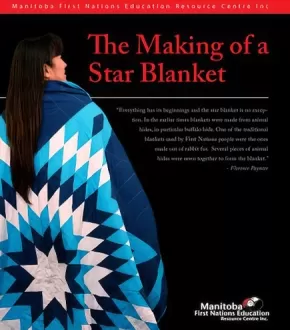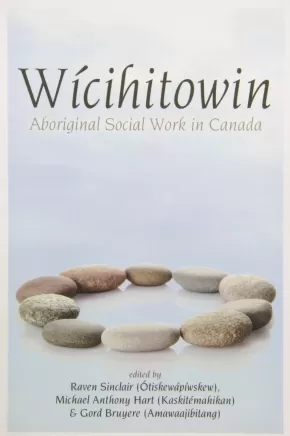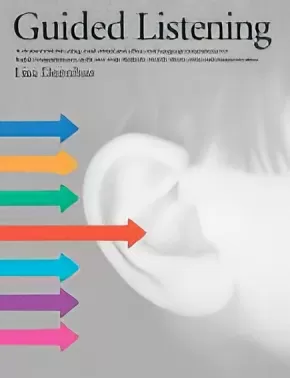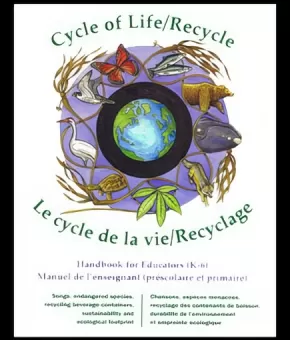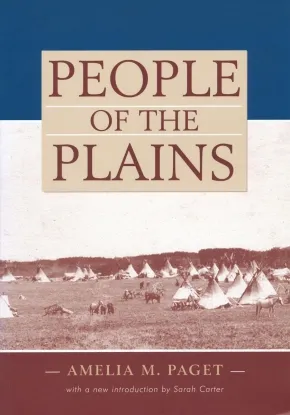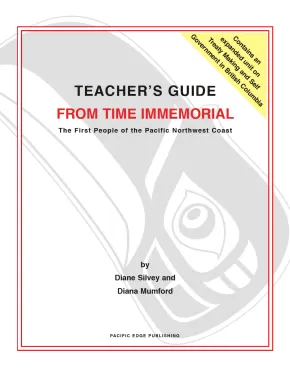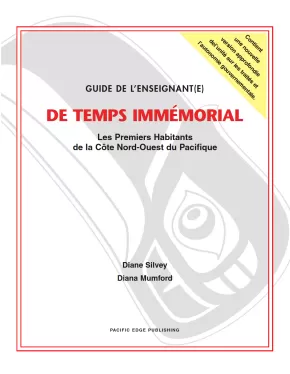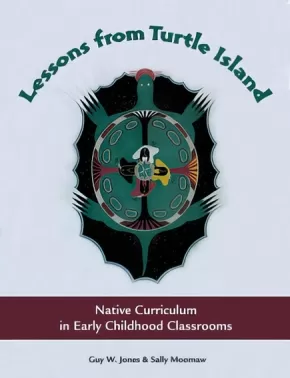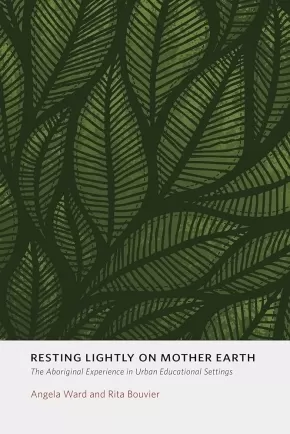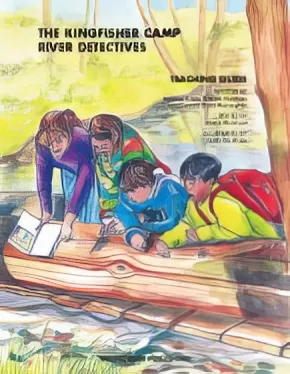Educator Resources
Synopsis:
The Gibson Park Grassland Detectives Teacher's Guide provides excellent support materials to meet the national Life Science learning outcomes for the development of skills and the acquisition of knowledge. The guide facilitates the integrative teaching of Language Arts, Science, and Social Studies.
This guide includes:
- activities integrating themes across the curriculum (Language Arts, Social Studies, Math, and Art)
- hands-on activities
- reproducible blackline masters
- suggested assessment strategies and tools
- references and annotated resource list of related titles
- links to appropriate WWW sites

Synopsis:
Strong Reader Tools Classroom Poster (2'x3')
Are you looking for a comprehension tool that works for everyone in the building? This poster has been designed to work for all, a great starting point for everyone to enter in at and then begin your journey together using the same language and strategies. It has been used in many schools, at ALL levels, with great success.
Features Include:
- Student friendly text
- Student friendly font
- Categorized into before, during and after the read
- Sentence stem prompts to support learning
- Builds comprehension
- Can be used in a number of curricular areas
- Mini poster is ideal for student desks or binders, size 4 1/2" x 11"
Kids love it and they use it!
Additional Information
ISBN: 208309700069
Synopsis:
This resource provides an opportunity for students to work with paper and colour, while integrating the concept of numbers into the learning and teaching process. The hands-on experience of being able to fold paper into different shapes, patterns and designs, and add colour is an effective strategy to motivate students to learn math. The section, “The Star Blanket Making Process From the Sewing Perspective,” shows a step-by-step progression of how to assemble a star blanket. Not only does it teach practical skills, it also teaches patience and builds positive self-esteem within the learner.
Educator Information
While the publisher of this work indicates it's a useful math resource, it has been expressed by educators that this is not a useful math resource.
● Michael Anthony Hart (Kaskitémahikan) (Indigenous Canadian; First Nations; Cree (Nehiyawak); Fisher River Cree;)
● Raven Sinclair (Ótiskewápíwskew) (Indigenous Canadian; First Nations; Anishinaabeg; Ojibway; Saulteaux; Assiniboine (Nakoda Oyadebi); Cree (Nehiyawak);)
Synopsis:
Wícihitowin is the first Canadian social work book written by First Nations, Inuit and Métis authors who are educators at schools of social work across Canada. The book begins by presenting foundational theoretical perspectives that develop an understanding of the history of colonization and theories of decolonization and Indigenist social work. It goes on to explore issues and aspects of social work practice with Indigenous people to assist educators, researchers, students and practitioners to create effective and respectful approaches to social work with diverse populations. Traditional Indigenous knowledge that challenges and transforms the basis of social work with Indigenous and other peoples comprises a third section of the book. Wícihitowin concludes with an eye to the future, which the authors hope will continue to promote the innovations and creativity presented in this groundbreaking work.
Educator Information
Table of Contents
Foreword (Richard Vedan)
SECTION 1: History and Theory
Thoughts Make Dreaming: Historical and Theoretical Aspects for Indigenous Social Work by Gord Bruyere (Amawaajibitang)
Bridging the Past and the Future: An Introduction to Indigenous Social Work Issues by Raven Sinclair (Ótiskewápíwskew)
Anti-Colonial Indigenous Social Work: Reflections on an Aboriginal Approach by Michael Anthony Hart (Kaskitémahikan)
Indigenous-Centred Social Work: Theorizing a Social Work Way-of-Being by Gail Baikie
SECTION 2: Practice
Dreaming Makes Action: The Practice of Indigenous Social Work by Gord Bruyere (Amawaajibitang)
A Holistic Approach to Supporting Children with Special Needs by Rona Sterling-Collins (Quistaletko)
Identity or Racism? Aboriginal Transracial Adoption by Raven Sinclair (Ótiskewápíwskew)
Beyond Audacity and Aplomb: Understanding the Métis in Social Work Practice by Cathy Richardson (Kinewesquao) and Dana Lynn Seaborn
Evolution and Revolution: Healing Approaches with Aboriginal Adults by Cyndy Baskin (On-koo-khag-kno kwe)
For Indigenous People, by Indigenous People, with Indigenous People: Towards an Indigenous Research Paradigm by Michael Anthony Hart (Kaskitémahikan)
SECTION 3: Traditional Knowledge
The Spirit of Dreaming: Traditional Knowledge for Indigenous Social Work by Gord Bruyere (Amawaajibitang)
Navigating the Landscape of Practice: Dbaagmowin of a Helper by Kathy Absolon (Minogiizhigokwe)
Kaxlaya Gvila: Upholding Traditional Heiltsuk Laws, Values and Practices as Aboriginal People and Allies. by Michelle Reid (Juba)
Gyawaglaab (Helping one Another): Approaches to Best Practices through Teachings of Oolichan Fishing by Jacquie Green (Hemaas, Moosmagilth, Ungwa, knewq Kundoque of the Helkinew clan, knewq Haisla, Kemano and Kitselas)
Conclusion by Michael Hart (Kaskitémahikan), with Raven Sinclair (Ótiskewápíwskew)
Closing Words
Notes
References
Additional Information
256 pages | 6.00" x 9.00"
Synopsis:
A framework for using read-aloud and other oral language experiences to build reading comprehension skills and help readers record, share, value, and interpret ideas
This comprehensive guide offers a framework for using read-aloud and other oral language experiences to build reading comprehension skills and help students record, share, value, and interpret ideas. These organizational tools free students to listen more attentively; organize their responses; and watch for subtle clues, such as body language, that are an important part of listening. The book is organized around common reading strategies, including making inferences and predictions, making connections, visualizing, asking questions, and synthesizing. Tools to complement these strategies include reproducible graphic organizers, rubrics, forms for recording student progress, and numerous worksheets.
This French version (text and song lyrics) was translated by Quebec biologist Sylvain Archambeault. The songs were performed by children’s choirs in BC, Alberta and Quebec. We’ve had many comments from French teachers about the artistic excellence of the songs. Le cycle de la vie/Recyclage fills a gaping need for quality, new songs and science education materials for use in French immersion schools. See English description for more details.
Synopsis:
Amelia McLean Paget was born in 1867 at Fort Simpson, In what is now the Northwest Territories. Her father, William McLean, was a Scot involved in the fur trade and her mother, Helen Murray, belonged to an illustrious Métis famly which had been active in the fur trade for generations. Amelia's life spanned some of the most tumultuous events in the West, including the disappearance of the buffalo, the North-West Resistance, and the establishment of the reserve system. She had a more sympathetic appreciation of Aboriginal culture than is to found in many of her contemporaries. In People of the Plains (first published in 1909), she records her observations of the customs, beliefs, and lifestyles of the Plains Cree and Saulteaux among whom she lived. She died in Ottawa in 1922.
Additional Information
78 pages | 6.75" x 9.75" | Paperback
Synopsis:
From Time Immemorial provides an honest and up-to-date survey of the history of the coastal First Nations from pre-contact to the present. The culture of the coastal people was highly complex. Although there were many similarities, there were also many differences among the groups who shared the wealth of their life-sustaining environment. This book provides a broad overview of traditional ways common to a large number of diverse groups. It encourages readers to learn more about particular groups who, long ago, walked the shorelines and forest trails of the Pacific Northwest.
The Teacher’s Guide provides support materials to address 100% of the Learning Standards for the Grade Three Social Studies curriculum and the First Nations content for grades 4-8. It contains detailed lesson plans, reproducible blackline masters, assessment strategies and tools and activities integrating theme across the curriculum (Science, Math, Art and Language Arts).
Educator Information
Table of Contents
Part One
Using the Student Text
Using the Teacher's Guide
Your Social Studies Unit
Prescribed Learning Outcomes Charts
Setting the Stage
Part Two
From Time Immemorial
Chapter 1: Living Together: Villages and Families
Chapter 2: Living in Balance With the Sea: Fishing
Chapter 3: Living in Balance with the Land: Hunting and Gathering
Chapter 4: At Home by the Forest: Shelter and Clothing
Chapter 5: Travel in the Pacific Northwest: By Land, By Sea
Chapter 6: Living with the Spirits: Ceremonies and Beliefs
Chapter 7: Expressing a Culture: Art, Drama, Music and Games
Chapter 8: Living with Other Nations: Trade and Warfare
Chapter 9: Contact with Strangers: Explorers and Traders
Chapter 10: Living with the Newcomers: A Way of Life Ends
Chapter 11: Losing Rights and Freedoms: Legislation and Discrimination
Part Three
Appendix A: Blackline Masters
Appendix B: Assessment/Evaluation Tools
Appendix C: Annotated Related Resource List
Appendix D: Universal Declaration of Human Rights and First Nations RightsInfractions
Appendix E: The National Aboriginal Achievement Awards
Find the student resource that pairs with this teaching guide here: From Time Immemorial: The First Peoples of the Northwest Coast
This Teacher's Guide is also available in French, as is from Time Immemorial:
- Guide de la'enseignant(e) De Temps Immemorial
- De Temps Immemorial: Les Premiers Habitants de la Côte Nord-Ouest du Pacifique
Additional Information
218 pages | blackline masters included | For grades 3-8
Synopsis:
From Time Immemorial provides an honest and up-to-date survey of the history of the coastal First Nations from pre-contact to the present. The culture of the coastal people was highly complex. Although there were many similarities, there were also many differences among the groups who shared the wealth of their life-sustaining environment.
This book provides a broad overview of traditional ways common to a large number of diverse groups. It encourages readers to learn more about particular groups who, long ago, walked the shorelines and forest trails of the Pacific Northwest.
The Teacher's Guide provides support materials to meet 100% of the prescribed learning outcomes of the Grade Four Social Studies curriculum in BC with links to Social Studies IRP grade four learning outcomes and the Shared Learnings document. It contains detailed lesson plans, reproducible blackline masters, assessment strategies and tools and activities integrating theme across the curriculum (Science, Math, Art and Language Arts).
Educator Information
Table of Contents
Part One
Using the Student Text
Using the Teacher’s Guide
Your Social Studies Unit
Prescribed Learning Outcomes Charts
Setting the Stage
Part Two
From Time Immemorial
Chapter 1: Living Together: Villages and Families
Chapter 2: Living in Balance With the Sea: Fishing
Chapter 3: Living in Balance with the Land: Hunting and Gathering
Chapter 4: At Home by the Forest: Shelter and Clothing
Chapter 5: Travel in the Pacific Northwest: By Land, By Sea
Chapter 6: Living with the Spirits: Ceremonies and Beliefs
Chapter 7: Expressing a Culture: Art, Drama, Music and Games
Chapter 8: Living with Other Nations: Trade and Warfare
Chapter 9: Contact with Strangers: Explorers and Traders
Chapter 10: Living with the Newcomers: A Way of Life Ends
Chapter 11: Losing Rights and Freedoms: Legislation and Discrimination
Part Three
Appendix A: Blackline Masters
Appendix B: Assessment/Evaluation Tools
Appendix C: Annotated Related Resource List
Appendix D: Universal Declaration of Human Rights and First Nations RightsInfractions
Appendix E: The National Aboriginal Achievement Awards
Find the student resource that pairs with the Teacher's Guide here: De Temps Immemorial: Les Premiers Habitants de la Côte Nord-Ouest du Pacifique
This Teacher's Guide and the student resource are also available in English:
Synopsis:
The first comprehensive guide to addressing Native American issues in teaching children.
Create a curriculum that reflects and honors the diversity of all people," Lessons from Turtle Island "explores Native American issues in preschool and early primary education. The authors-one Native, one white-offer guidelines for learning experiences that move children beyond embedded stereotypes.
Educator Information
"This is a great resource for those who are just beginning to work with Indigenous children and are concerned about teaching with authenticity. This resource very firmly guides educators through what is considered appropriate, and what isn't, from an Indigenous perspective in the classroom. Therefore it could be easily taken the wrong way and I would recommend that while using this resource that you openly have conversation with your Indigenous Education staff about what you're reading. Currently several of the Indigenous titles are out of print but they are such well known books that they likely can be found in your DRC." -Terri Mack
Age focus: 3 to 8
Synopsis:
Historically, social work and psychology professions have pressured and coerced Aboriginal peoples to follow the euro-centric ways of society. The needs of Aboriginal peoples have not been successfully addressed by the helping profession due to a limited attempt to incorporate Aboriginal perspectives and practices of helping. Michael Hart briefly discusses colonization from an Aboriginal perspective, ontological imperialism, social work’s role in colonial oppression, and the dynamic of resistance. Seeking Mino-Pimatisiwin encourages Aboriginal concepts, values and perspectives to be effectively incorporated by helpers trained in counselling, supporting, and teaching disciplines.
Micheal Hart uses his own personal and professional experiences and that of other Aboriginal helpers. Throughout the book he outlines ways of adopting an Aboriginal Approach to helping. The closing chapter examines one such approach, the sharing circle, and how it can be used to guide practice with individuals, families, and groups in several contexts.
Additional Information
128 pages | 6.00" x 9.00"
Synopsis:
The voices of Aboriginal and non-Aboriginal participants are heard as they chronicle their survival in mainstream school systems. The authors describe and analyze the experiences of Aboriginal students, teachers, and pre-service teachers struggling to find a place in urban society. Some voices are resistant, others angry, many questioning, as they enter into tentative coalitions with other urban teachers who pursue social justice for Aboriginal peoples. The editors open the book with a wide-ranging look at the contexts of urban Aboriginal education, and explore the themes of the book—identity, disconnection from the land, spirituality, the effects of a colonial legacy—from their own Aboriginal and mainstream perspectives.
A strength of the book is the diversity of backgrounds and experiences the authors bring. The writers are Aboriginal and non-Aboriginal, from Canada, the United States and Australia. They have taught and worked in elementary and secondary schools, universities and teacher education programs. All have direct experience working in urban educational settings, and all bring passionate advocacy to their writing. Resting Lightly on Mother Earth is intended for both Indigenous and mainstream educators; it is particularly suitable for teachers and administrators in urban systems, teacher educators, and graduate and undergraduate education students.
Additional Information
|
Synopsis:
This resource was developed specifically for the BC Science and Social Studies curricula. It is the only comprehensive resource available which provides all the content necessary to learn about B.C.'s living and non-living resources. And best of all it has been developed in B.C. by B.C. educators and has been recommended by the BC Ministry of Education.
Students will learn:
- about land, mineral and water resources; the ways we use the resources and the effects of using them.
- how we use the land for growing crops, for raising animals and hunting wildlife and for forestry, tourism and recreation.
- that B.C.'s mountains are full of minerals and how this abundance of minerals makes mining B.C.'s third most important industry.
- why water is an important resource in B.C. for drinking, hydroelectric power, recreation, industry and as a food source.
- the uses, benefits and economic impact of BC's resources; from traditional First Nations' to present day.
-the evolution of the technology used in resource development and use, environmental issues, sustainability and careers.
The comprehensive teacher's guide provides support materials necessary to meet the prescribed learning outcomes for both the development of skills and the acquisition of knowledge. Hands-on activities, blackline masters and teaching strategies are included.
Synopsis:
The Kingfisher Camp River Detectives Teacher's Guide provides excellent support materials to meet the national Life Science learning outcomes for the development of skills and the acquisition of knowledge. The guide facilitates the integrative teaching of Language Arts, Science, and Social Studies.
This guide includes:
- activities integrating themes across the curriculum (Language Arts, Social Studies, Math, and Art)
- hands-on activities
- reproducible blackline masters
- suggested assessment strategies and tools
- references and annotated resource list of related titles
- links to appropriate WWW sites
Synopsis:
The Cedar Club Forest Detectives Teacher's Guide provides excellent support materials to meet the learning standards for the development of skills and the acquisition of knowledge. The guides facilitate the integrative teaching of Language Arts, Science, and Social Studies.
This guide includes:
- activities integrating themes across the curriculum (Language Arts, Social Studies, Math, and Art)
- hands-on activities
- reproducible blackline masters
- suggested assessment strategies and tools
- references and annotated resource list of related titles
- links to appropriate WWW sites




